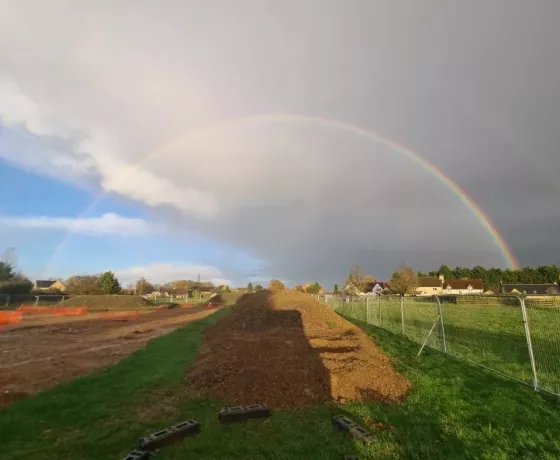As this week speeds on, and a red kite watches from above, our archaeologists are busy. It is still early days here in Aston for hand excavation, but it is a very promising start for what we have dug so far.
However, archaeology is not just about digging. It is a culmination of a wealth of knowledge, experience and people. It is about the study of the past using the material remains made by humans, such as tools; it is a study of the environment, it is a study of the intangible, and it is a study of a lot more besides. Our study into Aston has led us to look more closely at pottery; at what we can learn from the fragments we have uncovered so far.
Our pottery specialist has applied their knowledge and skill to a small sample of pottery sherds uncovered on site. These sherds are only fragments of larger vessels, but it is enough to determine what period these sherds are from, their style and even the materials used to create them.
A quote from our pottery specialist below:
“…the sherds appear to be Wychwood-type ware (c1175-1500) which was made at Ascott-under-Wychwood but the vessels here are wheel-turned and date after c1250. A date of c1250-1400 is probably about right for these. Wychwood-type ware is an oolitic limestone-tempered ware, the rims of cooking pots etc. sometimes have a greenish glaze.”
Our other pottery sherds have similar dates and information with c.1250-1400 for many of the cooking pot rims we have found, and c.1150-1350 assigned for a Kennet Valley B ware sherd, which is also a cooking pot/jar. We have only just begun, but we have a stronger idea for the timeframe this site existed, and possibly what type of site it was. One question answered - the when - now just on to the others and what else we can discover.
Other posts in this collection
Read our latest posts about the archaeological investigations at Aston.





